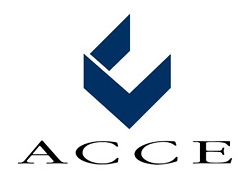As a chamber of commerce professional you might think that there are no benefits of adversity. But harnessing the power of adversity can help you navigate future challenges, foster growth, and drive positive change.

It is also a challenge to morale, especially if you are short (or single) staffed. However, it’s still possible to triumph through it, and doing so can be one of the highlights of your career.
What Does Adversity Mean to a Chamber?
Your chamber can face internal adversity or external adversity. An example of external adversity is what many people are currently facing: rising costs and a struggling economy. When your business members are facing financial challenges, you could be too.
Internal, on the other hand, could be a crisis with your board such as a lack of cooperation or contention in the ranks. It may be that your team is unprepared to handle external adversity such as a community crisis or natural disaster.
But facing adversity can do some incredible things for your professional growth in making you stronger and more resilient. You just have to know when to dig in and when your skills are best employed elsewhere.
If you’re struggling with something right now, it’s a good practice to realize there are many benefits to facing adversity as long as you do it in a healthy way.

The benefits of adversity (and other contentious situations) include:
Increased Empathy
Emotional intelligence is extremely important in leadership roles and facing adversity can be a “baptism by fire” scenario that helps you build empathy exponentially. For instance, if you have struggled with an intolerable situation with a past board and you read on the Chamber Pros Facebook group that someone else is going through the same, even if you don’t know that individual personally, you can understand how they feel.
Some leaders run into empathy roadblocks in their positions and they find it difficult to connect with those who are struggling with work/life balance, student loan debts, or other problems. Leaders may not have experienced it themselves so they can’t imagine the struggle. However, if you’ve faced a similar challenge, you’re able to draw from that experience and not only empathize with the person but also possibly mentor them or provide them with advice on what worked for you.
Better Mental Health and Well-being with Greater Life Satisfaction Over Time
When you’re going through adversity, it may seem hard to believe that these things are possible. However, according to a multi-year, longitudinal study by Mark Seery out of the University of Irvine, “adverse experiences may also foster subsequent resilience, with resulting advantages for mental health and well-being.”
He and his colleagues concluded that “in moderation, whatever does not kill us may indeed make us stronger.” If that sounds familiar, Nietzsche said it first in 1888 as “Out of life’s school of war—what doesn’t kill me, makes me stronger.”
But Kelly Clarkson sang it better. “What doesn’t kill you makes you stronger, stand a little taller!”
Increased Growth
Another benefit of moderate adversity is increased growth. When addressing an adverse situation, you may need to adapt new ways of thinking, learn new skills, or get practice using approaches you’ve long abandoned. It can be a way of uncovering and discovering what can benefit your career and personal development going forward.
Psychologists Richard Tedeschi, PhD, and Lawrence Calhoun, PhD, developed a theory around this idea in the mid-1990s, calling it “Post-Traumatic Growth.” You’ve probably heard people applying it to someone who has survived cancer or becoming a widow. But trauma isn’t limited to personal losses such as death or divorce. The suddenly sour attitude from a trusted board, the resignation of a key employee or the governmental shut-down of your entire tourism industry are all forms of trauma for a chamber professional. It’s hard to see the benefits of adversity when you’ve been blind-sided.
You will grow in ways that make future adversity easier to weather including a better appreciation for your job, your industry, or your board or members; a realization of your strength and capabilities; or a renewed sense that you can do difficult things.
While facing adversity lays the groundwork for becoming a better leader and person, we’re not diamonds in the rough. Yes, pressure can make us sparkly like those gems but it’s not solely the pressure that grinds us into something more in demand. It’s how we handle it that matters.

Leverage the Benefits of Adversity to Become a Stronger Chamber Pro
Here are some strategies to leverage adversity effectively. Which ones you employ will depend largely on whether the adversity you face is internal or external such as an issue between you and your board or one impacting the businesses in your community. This topic could also make a good seminar topic if you find your members are looking for direction and help in their struggles.
To make the most of adversity, you could:
- Embrace a growth mindset:
Building on the benefits listed above, cultivate a mindset that sees adversity as an opportunity for personal and professional development. Embrace challenges as learning experiences and view setbacks as stepping stones toward success. In a study out of the University of Pennsylvania, researchers found that viewing a negative situation as “doors opening” increased the opportunity for growth. If, for instance, you are fired from your position, looking at the firing as a way to free you to explore new opportunities can improve your growth and positive outcome after the initial adversity. - Seek alternative perspectives:
Adversity often provides a fresh perspective on existing situations. Actively seek out diverse opinions and feedback from appropriate colleagues, community members, and other professionals. This can help you identify new strategies, opportunities, and creative solutions. Look for people who have weathered similar storms. This is not an invitation to gossip about the situation or surround yourself with people who will fuel your fire into an uncontrollable inferno of rage. Extreme anger paralyzes or fuels regrettable action. We all have that friend who while they may be well-meaning, agrees with us to the point that it only makes us angrier or more belligerent. Safeguard your mood by seeking out someone with a diverse perspective but an empathetic approach. Be strategic in who you share with and look for people you know will help you. - Build resilience:
Resilience is key to navigating adversity effectively. Focus on developing your ability to bounce back from setbacks, remain adaptable, and stay positive in the face of challenges. Take care of your physical and mental well-being through self-care practices like exercise, mindfulness, and maintaining a support network.
- Foster collaboration:
Adversity can be better managed by collaborating with others. Engage with fellow chamber professionals, local businesses, committee heads, community leaders, and stakeholders to foster collaboration, exchange ideas, and leverage collective resources. By working together, you can find innovative solutions and strengthen your community. One of the benefits of adversity is that it can brings diverse groups closer together to solve a common problem. - Communicate effectively:
During challenging times, clear and transparent communication becomes even more critical. Keep your chamber members informed about ongoing efforts, challenges, and progress. Maintain open lines of communication, address concerns promptly, and provide guidance and support to businesses in need. If the problem is internal, make sure your communication is direct and documented. - Emphasize continuous learning:
Adversity presents an opportunity for growth and improvement. Encourage a culture of continuous learning within your chamber by offering training programs, workshops, webinars, and resources that help members adapt to changing circumstances. By promoting ongoing education, you empower member businesses–and all of their employees–to develop new skills and strategies to overcome adversity. - Advocate for your community:
In times of adversity, be a vocal advocate for your local business community. Stay informed about policy changes, economic developments, and legislative decisions that may impact businesses. Collaborate with local government officials, policymakers, and organizations to champion the needs and interests of your community. Look to create collectives or groups within your groups if a particular demographic has been hit harder than others to give them a louder voice.
Remember that harnessing the benefits of adversity is a process that requires time, effort, and resilience. By adopting these strategies, you can transform adversity into an opportunity for growth and make a positive impact as a chamber of commerce professional.

